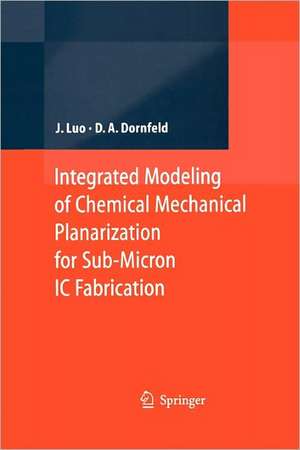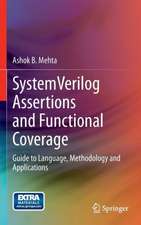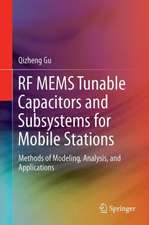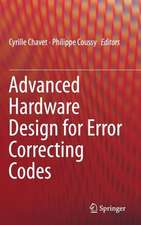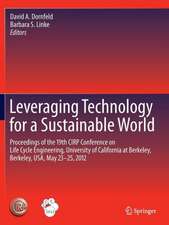Integrated Modeling of Chemical Mechanical Planarization for Sub-Micron IC Fabrication: From Particle Scale to Feature, Die and Wafer Scales
Autor Jianfeng Luo, David A. Dornfelden Limba Engleză Paperback – 15 dec 2010
| Toate formatele și edițiile | Preț | Express |
|---|---|---|
| Paperback (1) | 946.41 lei 6-8 săpt. | |
| Springer Berlin, Heidelberg – 15 dec 2010 | 946.41 lei 6-8 săpt. | |
| Hardback (1) | 952.72 lei 6-8 săpt. | |
| Springer Berlin, Heidelberg – 7 oct 2004 | 952.72 lei 6-8 săpt. |
Preț: 946.41 lei
Preț vechi: 1154.16 lei
-18% Nou
Puncte Express: 1420
Preț estimativ în valută:
181.09€ • 189.58$ • 149.84£
181.09€ • 189.58$ • 149.84£
Carte tipărită la comandă
Livrare economică 07-21 aprilie
Preluare comenzi: 021 569.72.76
Specificații
ISBN-13: 9783642061158
ISBN-10: 364206115X
Pagini: 336
Ilustrații: XXIV, 311 p.
Dimensiuni: 155 x 235 x 18 mm
Greutate: 0.47 kg
Ediția:Softcover reprint of hardcover 1st ed. 2004
Editura: Springer Berlin, Heidelberg
Colecția Springer
Locul publicării:Berlin, Heidelberg, Germany
ISBN-10: 364206115X
Pagini: 336
Ilustrații: XXIV, 311 p.
Dimensiuni: 155 x 235 x 18 mm
Greutate: 0.47 kg
Ediția:Softcover reprint of hardcover 1st ed. 2004
Editura: Springer Berlin, Heidelberg
Colecția Springer
Locul publicării:Berlin, Heidelberg, Germany
Public țintă
ResearchCuprins
1 Introduction.- 2 Review of CMP Modeling.- 3 Material Removal Mechanism in CMP: A Comprehensive Model of Abrasive Particle, Pad Asperity and Wafer Interactions.- 4 Effects of Abrasive Size Distribution in CMP.- 5 Material Removal Regions in CMP: Coupling Effects of Slurry Chemicals, Abrasive Particle Size Distribution and Wafer-Pad Contact Area.- 6 One and Semi-Two Dimensional Feature- and Die-Scale Modeling for the Damascene Process.- 7 Three-Dimensional Feature-Scale Modeling of CMP.- 8 Wafer-Scale Modeling of CMP.- 9 Summary and Future Work.- A Boundary Element Method.- A.1 Introduction.- A.2 Governing Differential Equation of Elastostatics.- A.3 Betti’s Reciprocal Theorem and Kelvin’s Solution.- A.4 Boundary Integral Equation.- A.5 Numerical Formulation of Boundary Integral Equation.- A.6 System Equations.- A.7 BEM vs. FEM.- A.8 References.
Textul de pe ultima copertă
This book is the product of a developing research focus on CMP at Berkeley. Its focus is on the important area of process models which have not kept pace with the tremendous expansion of applications of CMP. It specifically deals with the development of models with sufficient detail to allow the evaluation and tradeoff of process inputs and parameters to assess impact on quality or quantity of production. The important role of the mechanical elements of the process are included in such an "integrated model". The objective of the book is to introduce some background on the overlooked mechanical aspects of the process - including pad surface topography and abrasive particles. The "integrated model" can be particularly useful as one looks towards optimization of the process, design of consumables and, importantly, looking to minimize the environmental affects of CMP.
Caracteristici
First book dedicated to the modeling of CMP for sub-micron integrated circuit (IC) fabrication Modeling and simulation are critical to transfer CMP from an engineering ‘art’ to an engineering ‘science’
